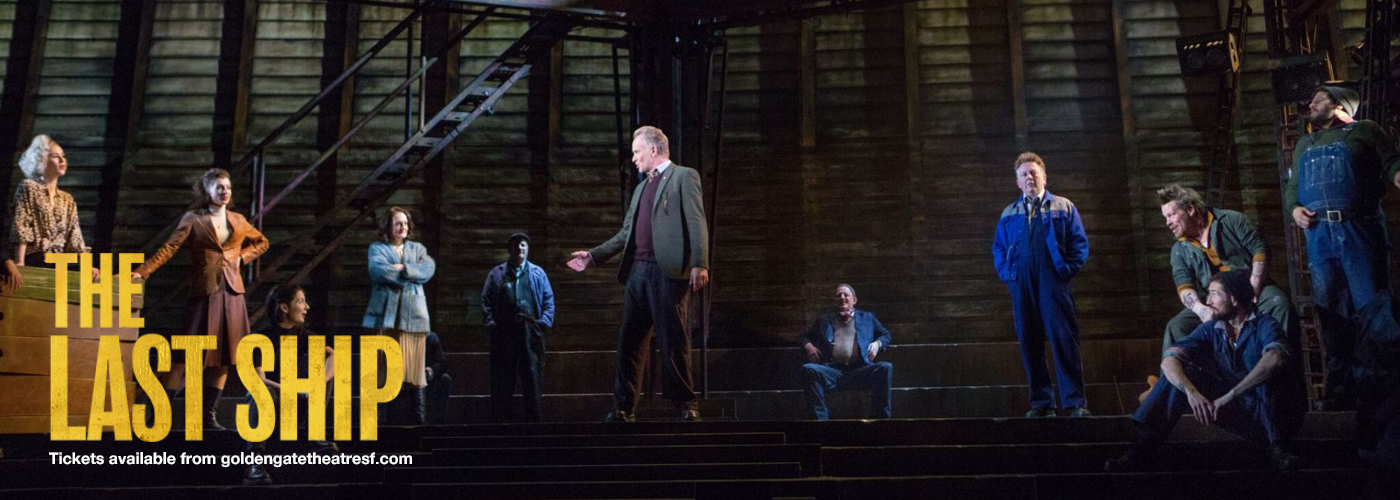The Last Ship at Golden Gate Theatre

Golden Gate Theatre presents The Last Ship, the newly re-tooled Musical by Sting! Now also starring Sting! Featuring songs by Sting! So, if you like Sting, then this musical if perfect for you! Based on real life shipbuilding on the Upper Clyde, across the pond in Britain, just outside Manchester and the place where Sting grew up and the base of the shipbuilding industry in Wallsend, Tyne and Wear. The Last Ship is a story of finding your own place in the world, about family and lost love, and a story of how the working men an women stood up to the government bureaucrats and won! So buy some tickets now and be in for a treat as Sting himself performs “Island of Souls” and “All This Time” set to the astonishing background of an enormous hulking skeleton of a ship.
The Last Ship Tickets
“The impressive, surprisingly versatile shipyard set is transformed from moment to moment by the fabulous use of projected images.” – Mark Brown, The Daily Telegraph.
“A STIRRING MUSICAL. Some of the most thrilling choral writing I’ve heard in a British musical” – Michael Billington, The Guardian.
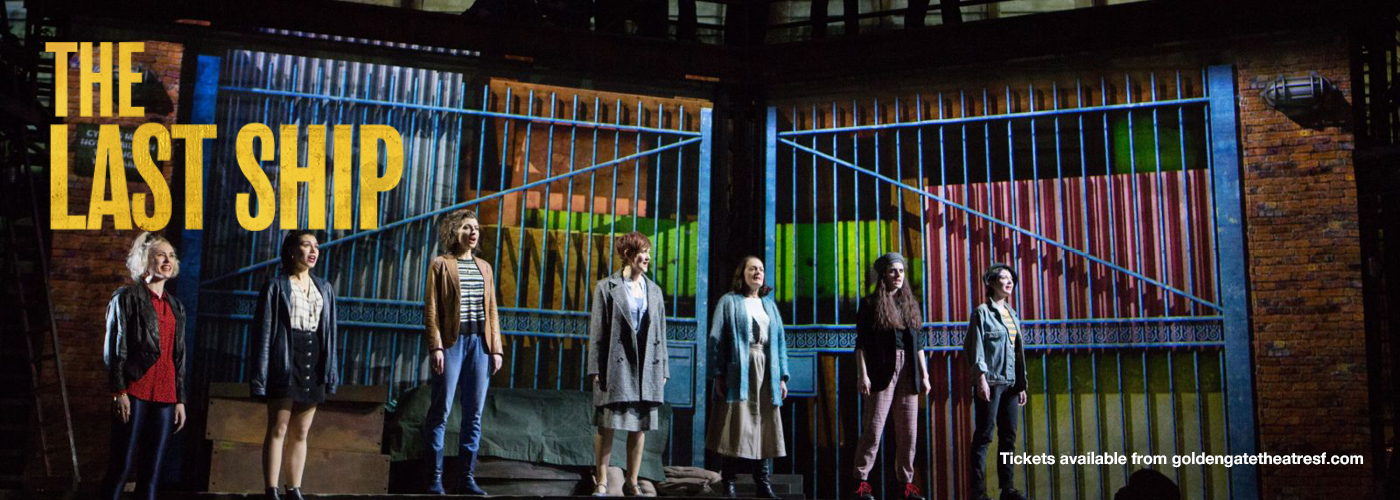
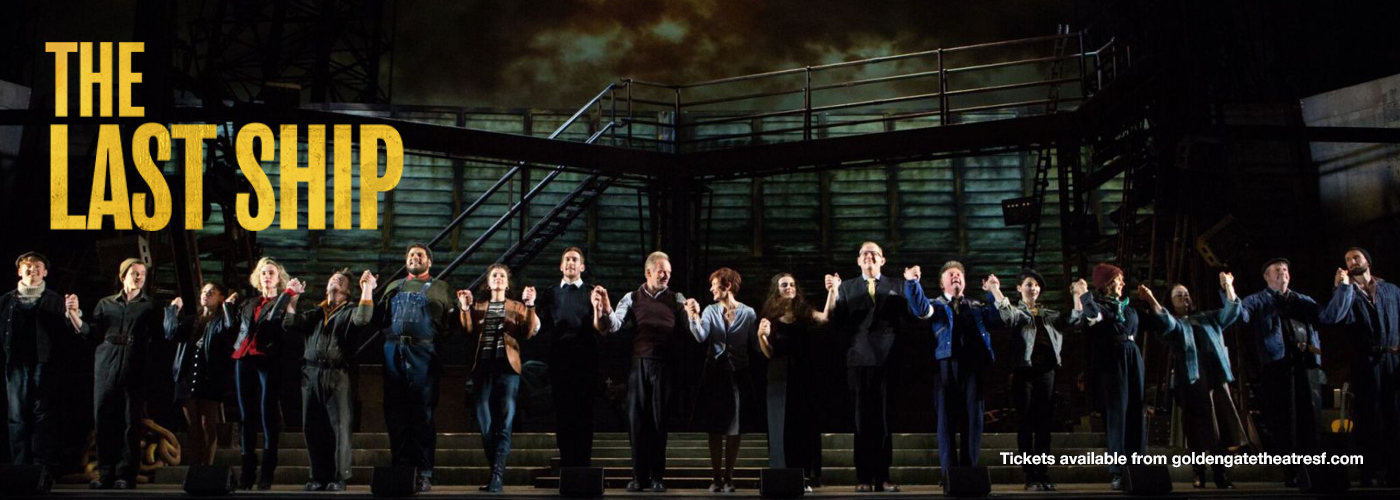
Gideon Fletcher dreams of a different future, tired of the small town of Wallsend. He sets out to travel the world, leaving his life and his love behind. Seventeen years later, when that same sailor finally returns home after years at sea, tensions between past and future flare in both his family and his town. The local shipyard, around which the community has always revolved, is closing and no one knows what will come next, only that a half-built ship towers over the terraces. With the engine fired and pistons in motion, picket lines are drawn as foreman Jackie White, played by Sting, and his wife Peggy fight to hold their community together in the face of the gathering storm.
Based on the real events of the Clyde work-in during 1971. The Last Ship received two Tony Award nominations in 2015, for Best Original Score and Best Orchestrations. The Musical features an original score and lyrics by CBE recipient, Multi-Grammy Award winning Gordon Matthew Sumner better known as Sting, the show features mostly brand new material as well as four previously recorded songs “Island of Souls” and “All This Time” from The Soul Cages, “When We Dance” from Fields of Gold and “Ghost Story” from Brand New Day. It is written by Lorne Campbell from the original material by the Acadamy award winning John Logan and Brian Yorkey and is inspired by Sting’s own childhood experiences and the shipbuilding industry in Wallsend, Tyne and Wear. The Musical is directed by Karl Sydow with choreography by Olivier and Obie Award winning Steven Hoggett, set and costume design by David Zinn, lighting design by two-time Tony and Drama Desk Award winner Christopher Akerlind and sound design by Brian Ronan.
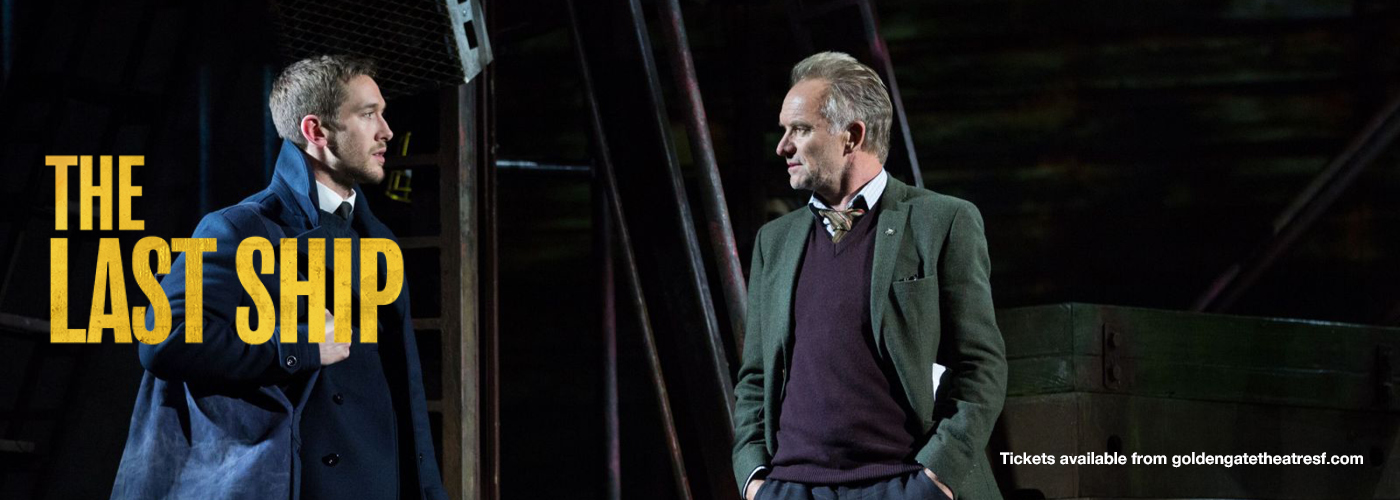
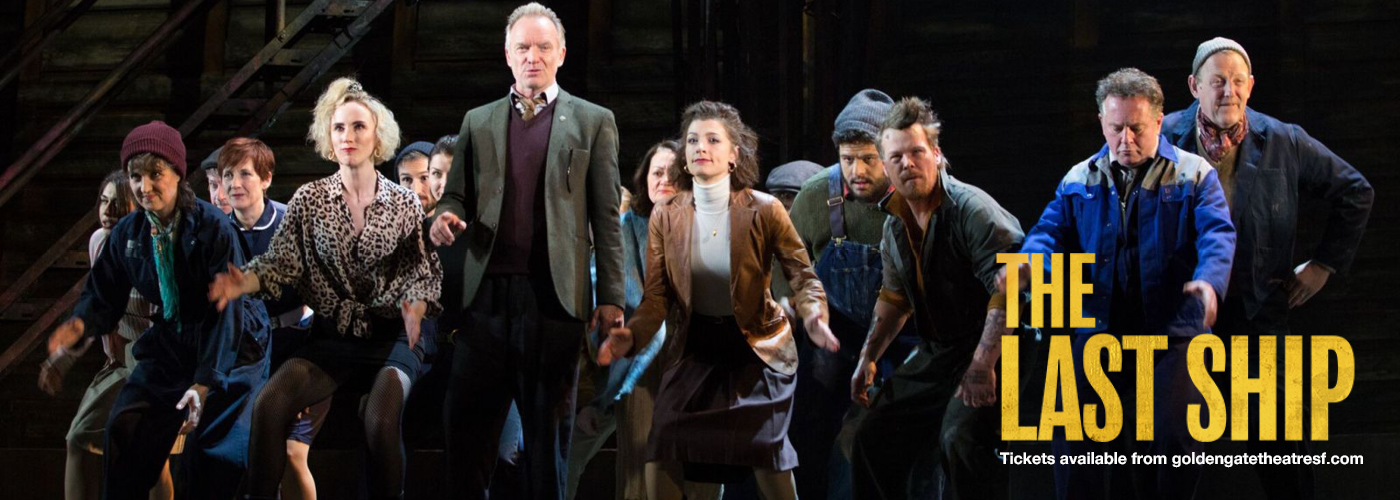
“Sting lives up to his nickname, “the King of Pain,” with “The Last Ship.” Melancholy tones of sorrow and regret saturate this highly personal and intensely felt musical play, which is set in Wallsend, the industrial town in the north of England where the singer-songwriter grew up. The somber book by John Logan and Brian Yorkey takes place in 2007, the year the historic shipyard closed and the town lost its purpose and identity. The lyrical language of Sting’s mournful score gives poetic voice to the distressed shipbuilders, but depicting their story as a heroic allegory is regrettably alienating. Helmer Joe Mantello has done a masterful job of translating Sting’s haunting musical idiom (especially in soulful songs like “The Last Ship” and “Island of Souls”) into stark imagery. The centerpiece of David Zinn’s set is the metal skeleton of a massive ship, looming over the bewildering trappings of a busy shipyard and overshadowed by projections of a dark and restless sea. Christopher Akerlind’s lighting design ranges from blue-black and green-black to solid black-black, and Brian Ronan is responsible for the discordant soundscape (in “Shipyard”) of strong men hard at work. Being grounded in the very real world of collapsing industries and a redundant work force, Sting’s story doesn’t lend itself to this mythic treatment. Although the characters only go skin-deep, there’s enough humanity in them to make us fret about realistic concerns like how the ship-building enterprise was funded and why Meg didn’t string Gideon up by his heels.”
– Marilyn Stasio, Variety.“How the Clyde work-in inspired Sting’s Last ship. The plot of Sting’s new musical The Last Ship has strong echoes for three former Clyde shipyard workers. They went with me to see the new stage production in which a shipyard faces closure and the workers decide to take control by finishing off the construction of a half-built ship. This is what Jimmy Cloughley, Linda Hamill and Thomas Brotherston experienced in 1971 when they were among thousands of workers at the Upper Clyde Shipbuilders (UCS) who staged a work-in. Edward Heath’s Conservative government had been determined not to prop-up what they termed “lame duck” industries and wanted to stop funding UCS, which was a consortium of shipyards at Govan, Scotstoun and Linthouse. The decision meant at least 6,000 of the 8,500 shipyard workers employed by the yards would have to be made redundant. Instead of striking, and to show they were not work-shy, shipyard workers decided to demonstrate the viability of the business by occupying the yards and completing existing orders in a bid to prevent closure. At the time, the resulting work-in received huge media attention, not least because of the very quotable workers committee leader, the late Jimmy Reid. He famously told the workforce: “There will be no hooliganism. There will be no vandalism. And there will be no bevvying – because the world is watching us.” The well-orchestrated UCS campaign attracted widespread public support, and the UK government, led by Ted Heath, finally relented in February 1972. It announced a £35m injection of cash into the yards. Within three years, shipbuilding on the Upper Clyde had received about £101m of public grants and credits, with £20m going to the UCS.”
– David Allison for Good Morning Scotland, BBC.

